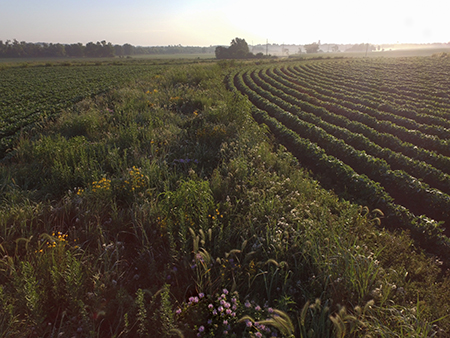Native Plant Conservation Campaign News: Iowa State University program places native prairie strips on farms, benefiting soil, water and biodiversity
November 12, 2019
The “Science-based Trials of Row-crops Integrated with Prairie Strips” (STRIPS) program was conceived in 2003 by Iowa State University scientists to study the effects of native prairie on soil, water, and biodiversity on farms.
to study the effects of native prairie on soil, water, and biodiversity on farms.
 to study the effects of native prairie on soil, water, and biodiversity on farms.
to study the effects of native prairie on soil, water, and biodiversity on farms.Strips of native prairie of varying sizes have been planted on experimental and commercial farms. The strips are often employed in concert with other “regenerative agriculture” techniques such as cover crops and no-till practices. (Regenerative agriculture seeks to capture carbon in soil and aboveground biomass to reduce greenhouse gas accumulation and support soil health, water quality and native wildlife.)
After several years of data collection, the STRIPS team found that including even a small amount of native prairie on a farm substantially improves water quality and nutrient retention, reduces erosion, and generates other benefits.
For example, in farmed watersheds, the addition of only 10 percent prairie reduced sediment export by 95 %, phosphorus export by 90 %, and nitrogen export by nearly 85 % in surface runoff water when compared 100 percent row crop watersheds.
Further, after seven years, an average of 51 native plant species were found in prairie strips, compared to 13 species found within the row crop areas. These native plants provide habitat for birds, small mammals, bees and butterflies, and other beneficial organisms that cycle nutrients, increase soil fertility, and provide pest control and pollination services. Fields with prairie strips host twice as many birds and bird species than those with 100 percent row crops.
Learn more at the STRIPS website
Read more about the STRIPS program in Civil Eats
Photo: STRIPS project in Tama County, Iowa © Omar de Kok-Mercado